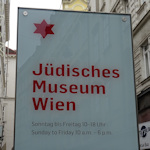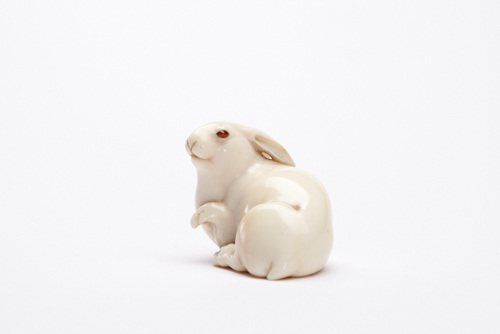
Rarely is a museum able to bring together history, art, and literature in a single exhibition. But the Jewish Museum’s presentation of the Ephrussi family story does exactly that.
- Traces the biography of this prominent Viennese family, who were forced to flee the Nazis in 1938
- A museal mirror to the book, The Hare with Amber Eyes
- Documentary approach intertwined with paintings and Netsuke sculptures
- Bilingual displays (German and English)
- Runs Nov 6, 2019 – Oct 4, 2020
- No extra fee required, just a museum ticket
- See also:
- Current exhibitions in Vienna
The Ephrussis: Travel in Time

(The Hare with Amber Eyes © Jüdisches Museum Wien)
Edmund de Waal’s award-winning family memoir, The Hare with Amber Eyes, tells the tale of the wealthy and pan-European Ephrussis, whose lives were shattered by the Nazis.
That same story sits at the heart of a new exhibition at Vienna’s Jewish Museum: The Ephrussis: Travel in Time.
Originally from Odessa, this Jewish family established a banking business in Vienna in the late 1850s and soon rose to great wealth and prominence in the Habsburg capital (and elsewhere in Europe).
The Ephrussipalais on Universitätsring, for example, is a magnificent construction from the 1870s, built for Ignaz Ephrussi by Theophil Hansen (the architect responsible for such iconic Viennese buildings as the Musikverein and Parliament).
Then came 1938 and the Nazis.
A (sadly) all-too-familiar story began, with the Ephrussis forced to flee persecution, their property and assets “appropriated” (i.e. stolen) by the authorities. Scions of the family settled in such places as the UK, USA, Mexico and Japan.
The exhibition traces the Ephrussi story along the disparate journeys (both voluntary and involuntary) of its members. The family’s own archives, recently donated to the museum, provide the bulk of the exhibits, including numerous photos and documents.
Some parts emphasize a place, such as the Ephrussis in Paris. Others address a time, such as the forced aryanisation of the family properties and art collections in Vienna in the late 1930s. And others reflect a theme, such the artistic interests of Charles Ephrussi in 19th century France.
Ongoing restitution efforts is another exhibition theme.
Ironically, the curators, Gabriele Kohlbauer-Fritz and Tom Juncker, discovered during their research that a painting in Vienna’s Museum of Military History should actually belong to the Ephrussi family. Franz Adam’s 1870 work, Scene from the Italian Campaign 1848/49, Encamping Troops in a Village is part of the exhibition.
(Editor’s note: the painting was returned to the Ephrussi family in late 2021.)
In a sense, the Ephrussi story is the Jewish experience in microcosm: the retention of a family construct within the context of migration, integration, persecution, and dispersal.
The communal story and family heirlooms run like threads through the exhibition. At the opening, de Waal himself described the displays as a:
…visualisation and dramatisation of our collective family story
Alongside the biographical transcript sit, seemingly incongruously, numerous Netsukes from the 19th century. These miniature Japanese sculptures, collected by the family and returned soon after WWII, are almost talismanic in their importance to the family history and spirit.
In his talk, de Waal described the Netsukes as:
…tactile objects of delight
You can even see the hare of de Waal’s book title (and often featured on the cover) in among the ivory and wood sculptures, which vary from the banal (a horse) to the cheeky (a disappointed rat catcher) to the more esoteric (a sea spirit).
As so often with exhibitions that include the period of Nazi rule in Austria, it is the “banality of the tragic” and the lack of reparations that touched me most. For example:
- A simple administrative notice announcing the appropriation of three properties of immense value, as if it was a simple receipt from a grocery store
- Learning that the director of Austria’s National Library commandeered the 2000 books from the aryanised Ephrussi library, with only around 410 traced and returned after the war
Dates and tickets
The exhibition runs from November 6th, 2019 to October 4th, 2020. There’s no special fee required to see the exhibition once you’re inside the museum. So just get a standard entrance ticket (or use a Vienna Pass).
How to get to the Ephrussis exhibition
The Jewish Museum has two sites and the exhibition occupies rooms on the first floor of the main Dorotheergasse location. See here for travel tips and general information on the museum.
Address: Dorotheergasse 11, 1010 Vienna